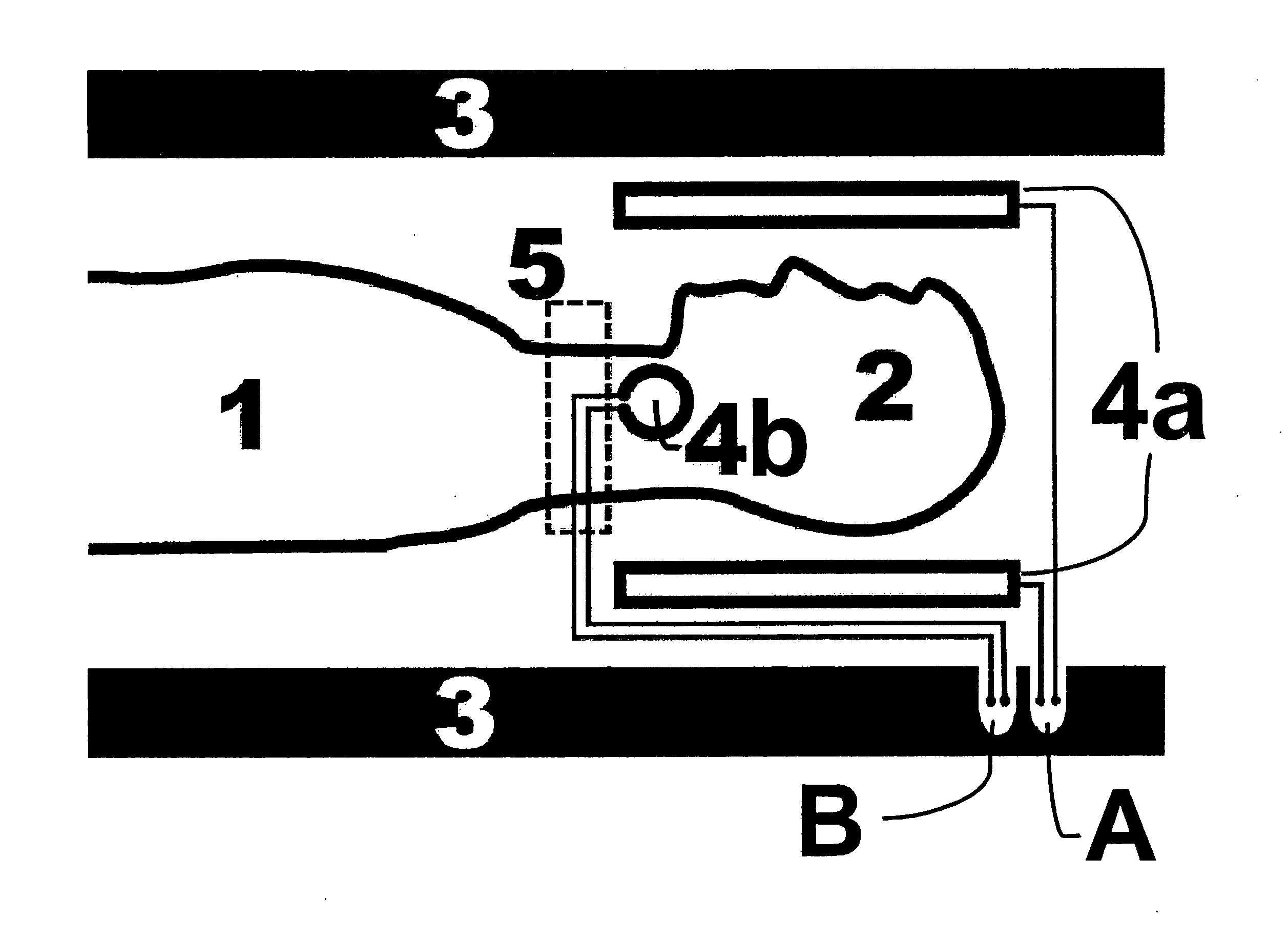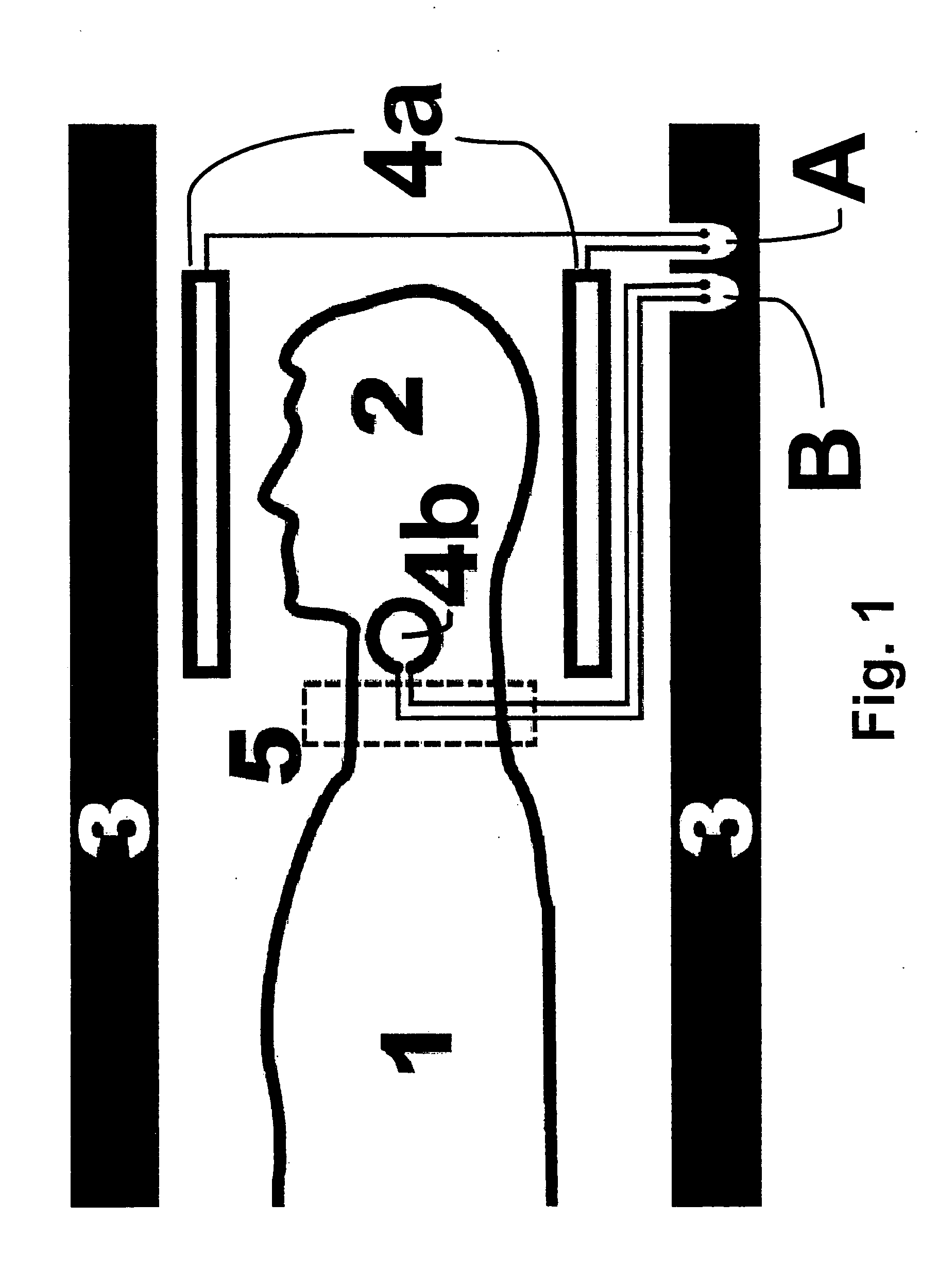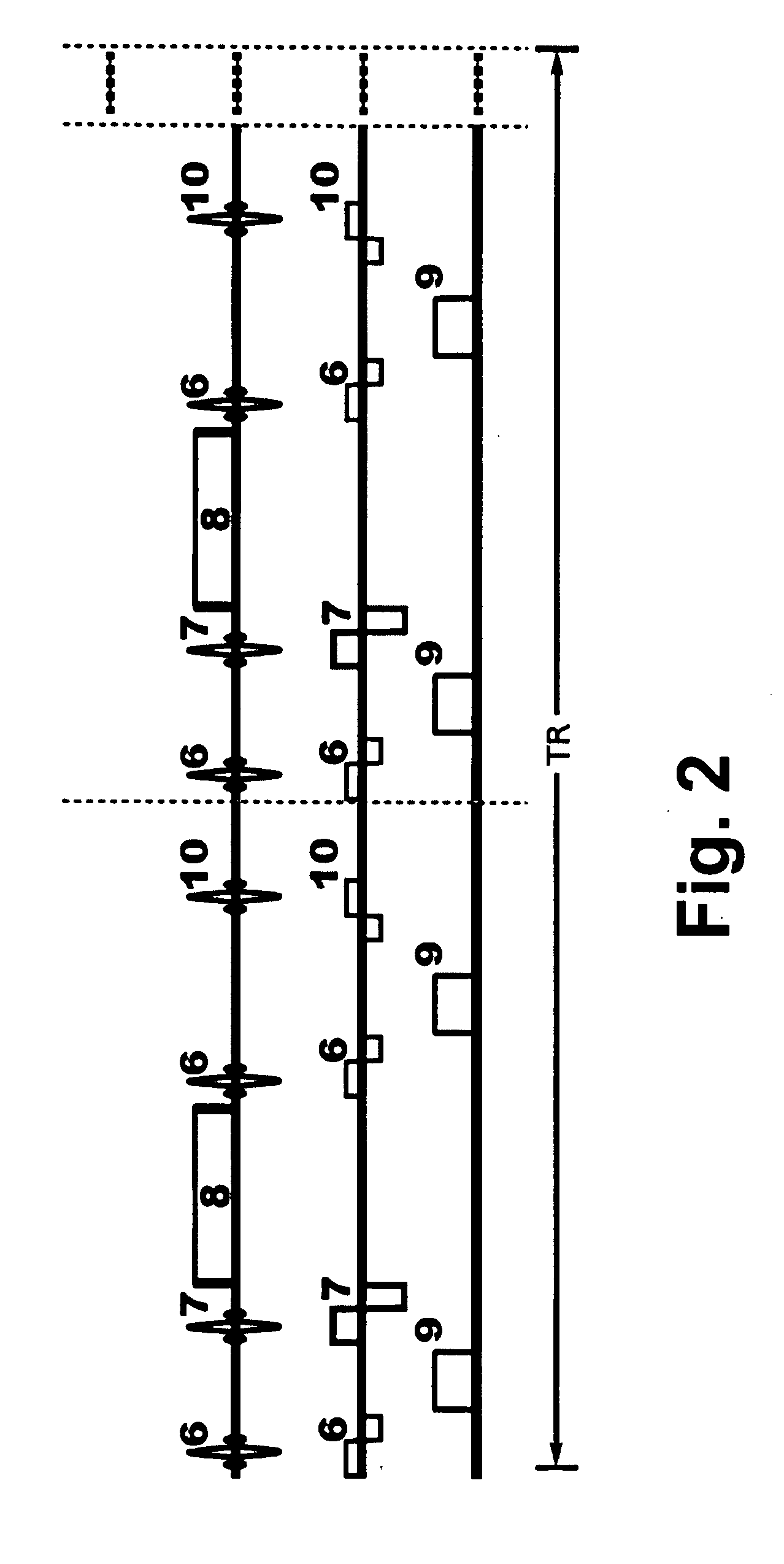Device and method for measuring contrast agent
a contrast agent and device technology, applied in the field of tomography devices, can solve the problems of affecting the spatial encoding of fast mr sequences, affecting the measurement of arterial signal, and the shortest echo time is still too long for measuring arterial signal, so as to achieve the effect of reducing the frequency of mr sequences
- Summary
- Abstract
- Description
- Claims
- Application Information
AI Technical Summary
Benefits of technology
Problems solved by technology
Method used
Image
Examples
Embodiment Construction
[0041]In the schematic representation FIG. 1, one part of the body 2 (in this case the head) of the living organism 1 under examination (in this case a human being) is positioned in the measurement volume defined by the first measurement unit 4a of the tomography device 3. The further measurement unit 4b constituted as a surface coil is attached to the neck of the patient. The magnetization from the excitation slice 5 is used as a signal source for the further measurement unit 4b.
[0042]FIG. 2 shows the measurement sequence for operation of an inventive tomography device. In the sequence, after excitation of the tissue magnetization 7 in each slice, an imaging block 8 is inserted to perform the in-slice encoding. The excitation of the contrast agent magnetization 6 in the slice that results in the signal 9 in the further measurement unit 4b can be performed before and / or after the imaging block 8 and the excitation 7. In the case of excitation before the imaging block 8, the influen...
PUM
 Login to View More
Login to View More Abstract
Description
Claims
Application Information
 Login to View More
Login to View More - R&D
- Intellectual Property
- Life Sciences
- Materials
- Tech Scout
- Unparalleled Data Quality
- Higher Quality Content
- 60% Fewer Hallucinations
Browse by: Latest US Patents, China's latest patents, Technical Efficacy Thesaurus, Application Domain, Technology Topic, Popular Technical Reports.
© 2025 PatSnap. All rights reserved.Legal|Privacy policy|Modern Slavery Act Transparency Statement|Sitemap|About US| Contact US: help@patsnap.com



